All products featured are independently chosen by us. However, SoundGuys may receive a commission on orders placed through its retail links. See our ethics statement.
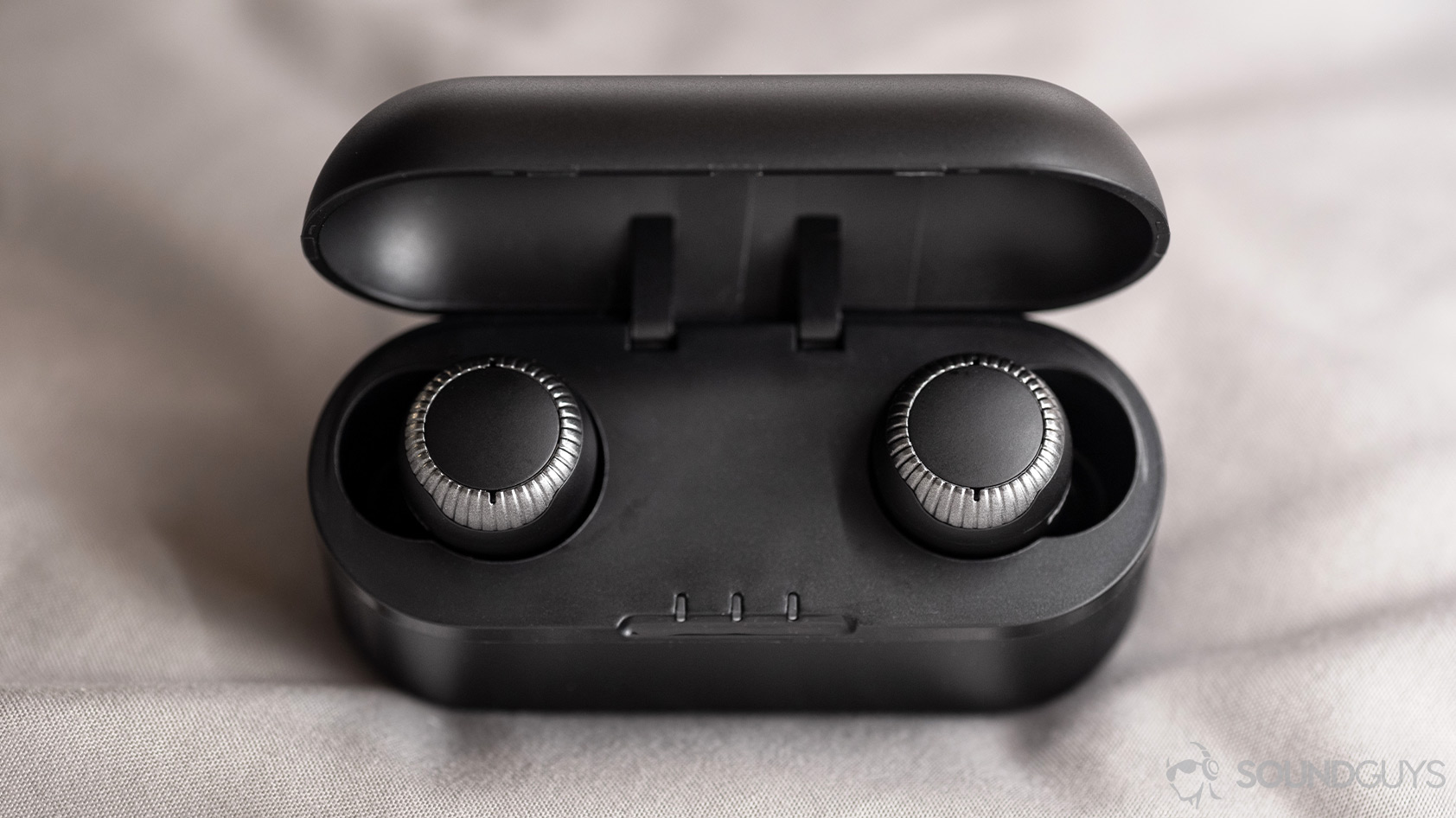
Panasonic RZ-S300W review
Published onMay 7, 2021
Panasonic RZ-S300W
Panasonic is no stranger to consumer audio, and it’s hoping to swing big with its RZ line of true wireless earbuds. Listeners who need versatile and unobtrusive earbuds will be charmed by the Panasonic RZ-S300W. These durable earbuds hardly protrude from the ear, and include useful features like quick charging and Amazon Alexa integration. Time to find out if these earbuds warrant the $119 price, or if the noise canceling RZ-S500W buds are a better value.
Editor’s note: this Panasonic RZ-S300W review was updated on May 7, 2021, to include more product information and more information about the Panasonic RZ-S500W.
Who should get the Panasonic RZ-S300W?

- All-purpose listeners should consider the Panasonic RZ-S300W as a great daily headset because they’re comfortable, compact, and supply pleasant sound to boot.
- Athletes will appreciate the RZ-S300W’s IPX4 water-resistant rating, which means you can sweat while wearing the earbuds without worry.
Using the Panasonic RZ-S300W
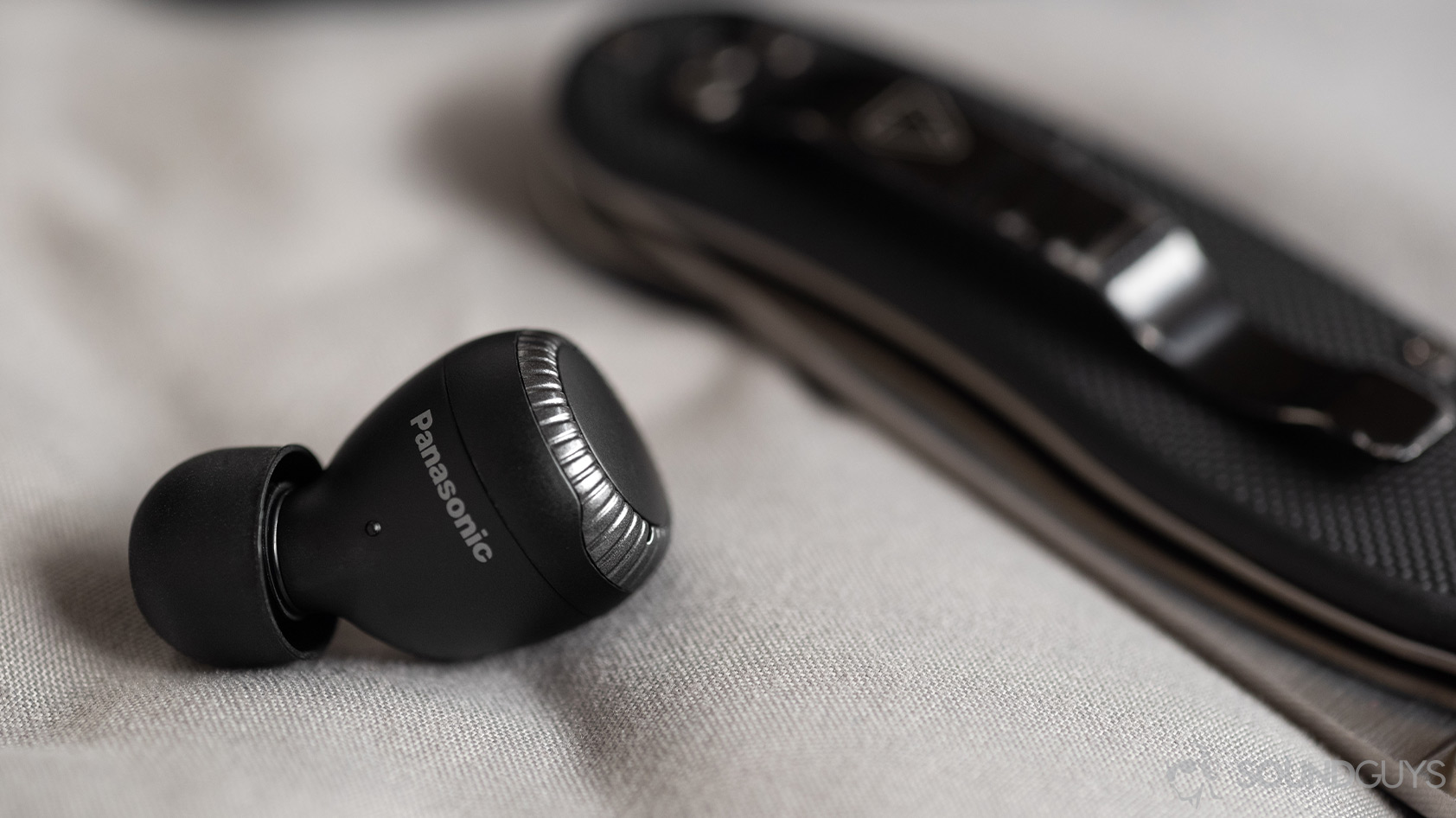
A charging case is the first impression any user has when using a true wireless headset, and the Panasonic RZ-S300W case is, well, unremarkable. The hinges feel a bit flimsy, and the design looks like the result of a lazy approach to minimalism. It’s outfitted with one USB-C input, two cutouts for the earbuds, and three LED indicators to notify users of the remaining battery life.
The earbuds, while not my style, have a sophisticated look to them thanks to their matte black finish and textured accent ring, which encompasses each touch panel. My favorite thing about the earbuds is how they fit: they’re small and barely protrude from my ear. Some may find it concerning that Panasonic doesn’t provide wing tips, but I never had an earbud fall out by accident while walking or skateboarding. Most listeners should be fine, so long as the small, medium, or large ear tips fit properly.
Start here: Ultimate headphone buying guide
Each earbud houses a handful of contact points for charging, but they don’t elicit quite the same feeling of discomfort as the larger RZ-S500W. Placing the earbuds back into the case was easy; I never had to be exact about their placement to ensure charging.
These are a feature-light pair of true wireless earbuds.
Operating the controls was a breeze, and I could do everything I wanted without drawing my phone from my pocket. Playback and volume controls are practically a given, and touch-and-hold access to Google Assistant was responsive, too. As with any headset, it takes a few uses to memorize the controls, but they’re easy to internalize.
Should you get the Panasonic Audio Connect app?
The Panasonic Audio app is an ugly duckling, but beneath that drab veneer are plenty of useful features worth playing around with: you may select your preferred virtual assistant, equalize the sound or select from two presets, prioritize connection stability or sound quality, and update the firmware. I opened the app plenty of times to play with the EQ settings, and it never crashed; good job, Panasonic.
Do the earbuds stay connected?
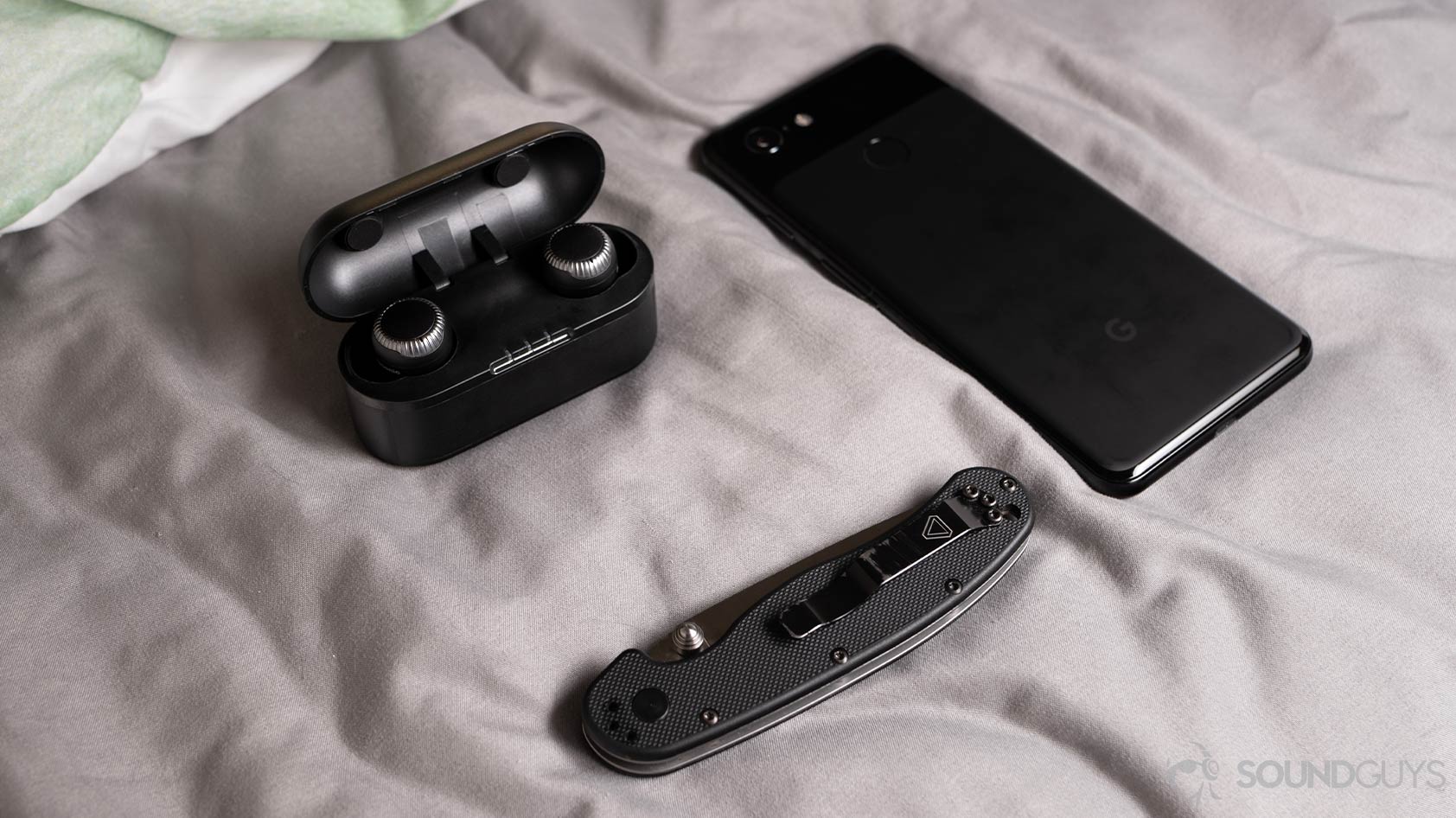
Yes, the Panasonic RZ-S300W stayed connected to my smartphone in various environments, in large part due to the independent connection each bud formed with my phone. Not only does this help with consistent connection quality, it also reduces latency and allows for either earbud to be used in mono mode. Bluetooth 5.0 firmware affords a 10-meter wireless range, but the lack of Bluetooth multipoint bummed me out.
Like most earbuds of this price, the Panasonic RZ-S300W only supports one high-quality Bluetooth codec: AAC. This is fine for iPhone users, as AAC plays incredibly well with iOS, but the same can’t be said for its performance across Android devices. Streaming quality is inconsistent, and most of the time Android users are better off forcing SBC for consistent audio quality.
Related: Best LDAC headphones
This lack of aptX support is disappointing, but Bluetooth codecs are only part of the equation. Sound quality is highly dependent on the actual hardware and how well the drivers are tuned to reproduce audio. Fortunately, Panasonic spared no resources when it came to creating a fun, clear sound for the RZ-S300W, so it’s easy to forgive the aptX omission. You will, however, notice audio-visual lag when watching TV or movies.
How to pair the earbuds
In order to pair the Panasonic RZ-S300W:
- Open the charging case and remove both earbuds.
- After a few seconds, both buds’ LEDs will flash blue and red to indicate pairing mode.
- Open your smartphone’s Bluetooth settings and select “RZ-S300W.”
According to the manual, pairing with a different headset requires you to remove the earbuds from the case, tap and hold either earbud for seven seconds, and select the RZ-S300W from your desired device’s menu. I wasn’t able to achieve this, so I had to manually unpair the earphones from one device to be able to pair and connect with another. In the grand scheme of things, it’s not a big deal, but seeing how devices like the Samsung Galaxy Buds Pro support Swift Pair for immediate device switching, the Panasonic experience feels cumbersome. Perhaps this will change with a firmware update.
How long does the battery last?
When subjected to a constant 75dB(SPL) output, the Panasonic RZ-S300W earphones lasted 7 hours, 9 minutes on a single charge, and the case provides a supplemental three charge cycles before it has to be topped up via the included USB-C cable. When in a pinch, the headset can quickly charge to supply 1.5 hours of playtime after just 15 minutes in the case. Some may be bummed about the lack of wireless charging, but it didn’t prove inconvenient during my Panasonic RZ-S300W review period.
True wireless earbuds aren’t built to last for years on end

A big problem with true wireless charging cases is that they’re always topping the earbuds up to 100%. Constantly repeating the partial-deplete, full-charge cycle shortens the lifecycle of a given true wireless headset.
Fortunately, we’re at a turning point for true wireless battery software: Apple announced that its AirPods models will soon support battery optimization with the hard release of iOS 14. This enables the headset to learn a user’s charging patterns and hold off on topping the buds off to capacity until needed. In theory, this will extend the life cycle of a given headset. Panasonic made no mention of similar software upon the RZ-S300W release, but we may see it coming down the pike.
How do the Panasonic RZ-S300W sound?
Panasonic uses 6mm dynamic drivers for its base model, which relay a pleasant, familiar sound: bass and treble notes are emphasized to create a more engaging tonal balance. In doing so, listeners may easily perceive low notes, while retaining some semblance of clarity thanks to the emphasis in the treble range.
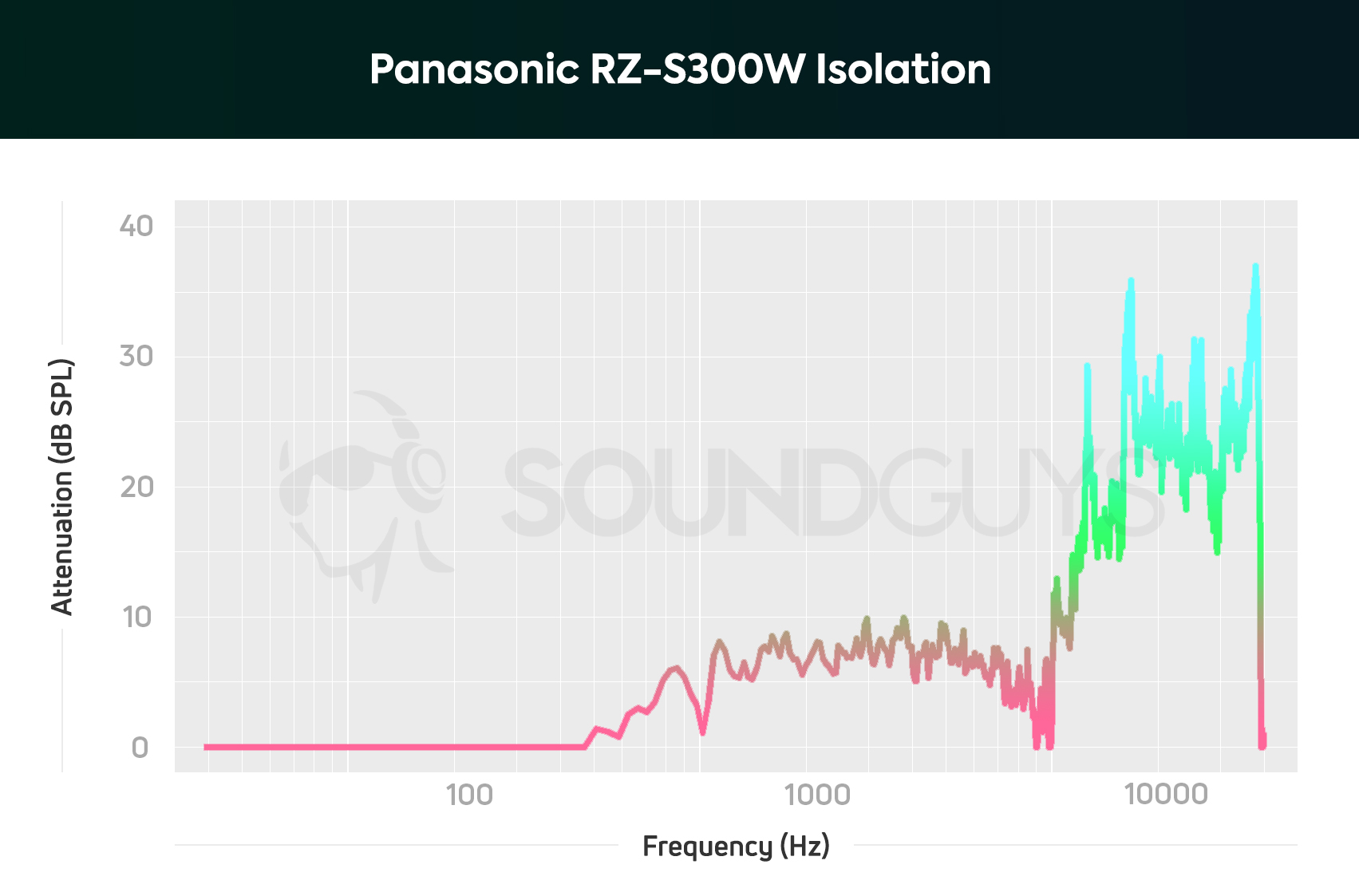
Isolation is pretty good, but not remarkable. Midrange frequencies like nearby conversations are rendered almost half as loud as they’d sound without the earbuds in. Again, this is fine, but low frequencies are unaffected by the earbuds, so if you’re going to use these for travel, I recommend turning your ears toward the excellent Panasonic RZ-S500W.
Lows, mids, and highs
Mahalia’s song I Wish I Missed My Ex depends on a steady bass beat and chorus to back up Mahalia’s soulful vocals. The bass drops at 0:20, and the slight bass amplification adds a thump to the consistent beat, which makes the song more engaging. The drawback to this is how it makes Mahalia’s lower register difficult to hear. A clear example of this is at 2:03, which is an instrumentally light segment relative to the chorus. As Mahalia sings, “troubling me all over my phone all night,” it’s hard to hear the word “night” because it coincides with a kick drum hit.
Related: How to read charts
This isn’t a huge deal: most people won’t notice this masking unless actively listening for it. However, listeners who keep their ears open for vocal detail and harmonies should take a moment to equalize the bass so it’s less amplified. Tambourine hits sound great with the headset though, especially during the choruses: the tambourine jingles are clearly rendered thanks to the treble emphasis, but aren’t so loud that they’re distracting.
Can I use the Panasonic RZ-S300W for phone calls?
Much like other embedded microphone systems, the Panasonic RZ-S300W is just okay. My voice sounds unclear and a little distorted. Again, it’s not terrible, but the cheaper Anker SoundCore Liberty Air 2 sounds better than these Panasonic buds.
Panasonic RZ-S300W microphone demo:
How does the microphone sound to you?
Panasonic RZ-S300W vs. Panasonic RZ-S500W
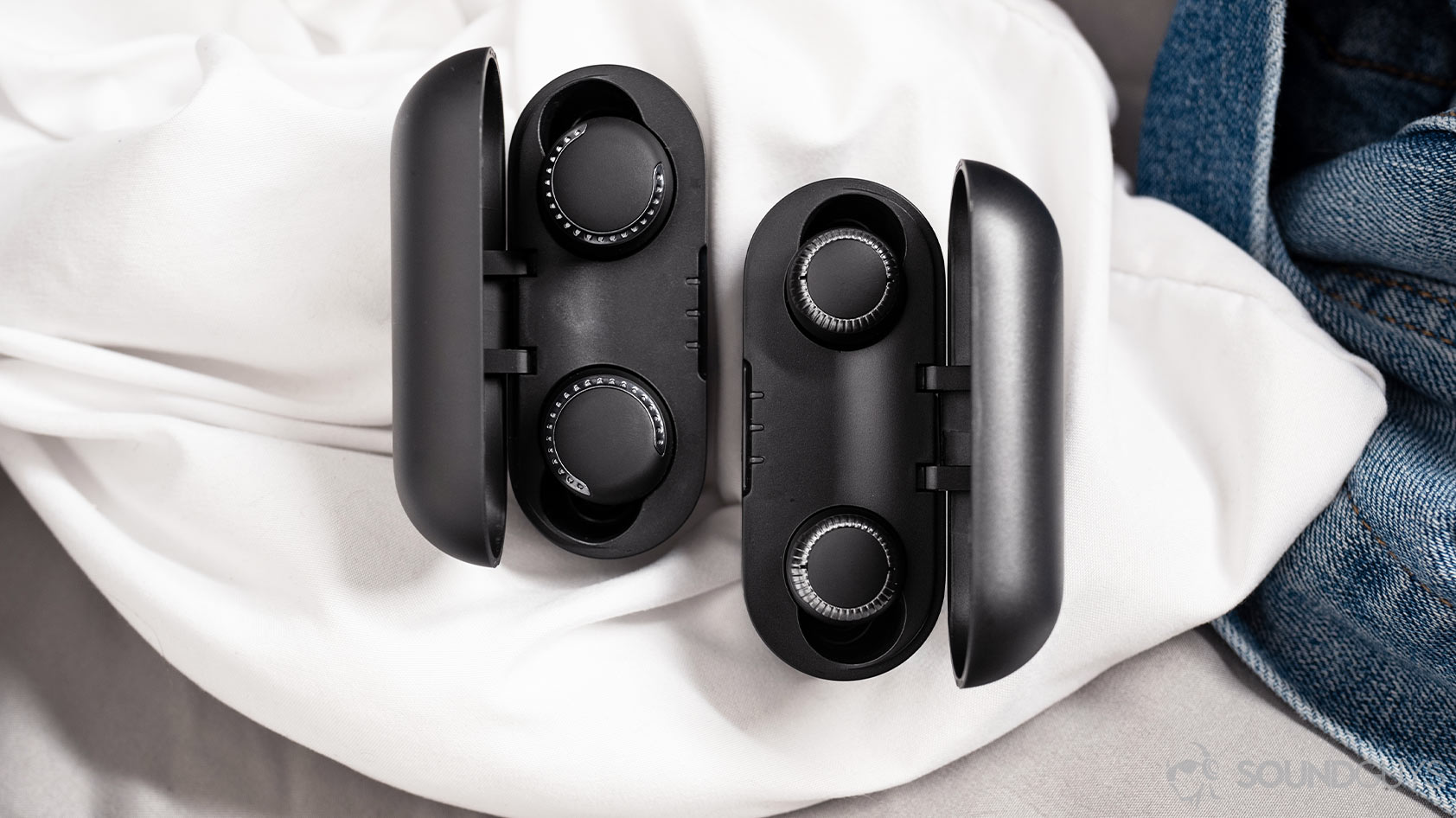
The Panasonic RZ-S300W and Panasonic RZ-S500W are very similar true wireless earbuds, but the latter includes noise canceling technology. Listeners who want some of the best noise canceling earphones on the market should throw down a bit more for the premium RZ-S500W earbuds: they use Panasonic’s hybrid ANC to cycle through 50 levels of intensity according to your environment. I was dubious of the technology, but found it so effective I had to decrease the noise canceling strength in the Panasonic Audio app because it was disorienting.
Each headset has a slightly different sound signature. Listeners who prefer a greater sub-bass presence should get the RZ-S500W model, while the RZ-S300W is tuned like more traditional consumer headsets with the bass notes being more emphasized than the sub-bass notes. The RZ-2300W have very good sound quality, but the RZ-SW2500 have powerful active noise canceling which bumps up the sound quality even more. What’s more, the microphone systems also differ from one another—the RZ-S500W is much better at recording and transmitting accurate, echo-free audio.
Get the RZ-S500W for remarkable noise canceling and an experience similar to that afforded by the RZ-S300W.
Both Panasonic earphones use Bluetooth 5.0 firmware and support just AAC for high-quality wireless streaming. Alexa integration is supported in this line of headsets, too. If you travel or commute regularly, the RZ-S500W are a better choice; otherwise, save some money and enjoy a longer play time with the Panasonic RZ-S300W.
Should you buy the Panasonic RZ-S300W?
The Panasonic RZ-S300W is a great headset for listeners who are willing to pay a bit more for sound quality and comfort.
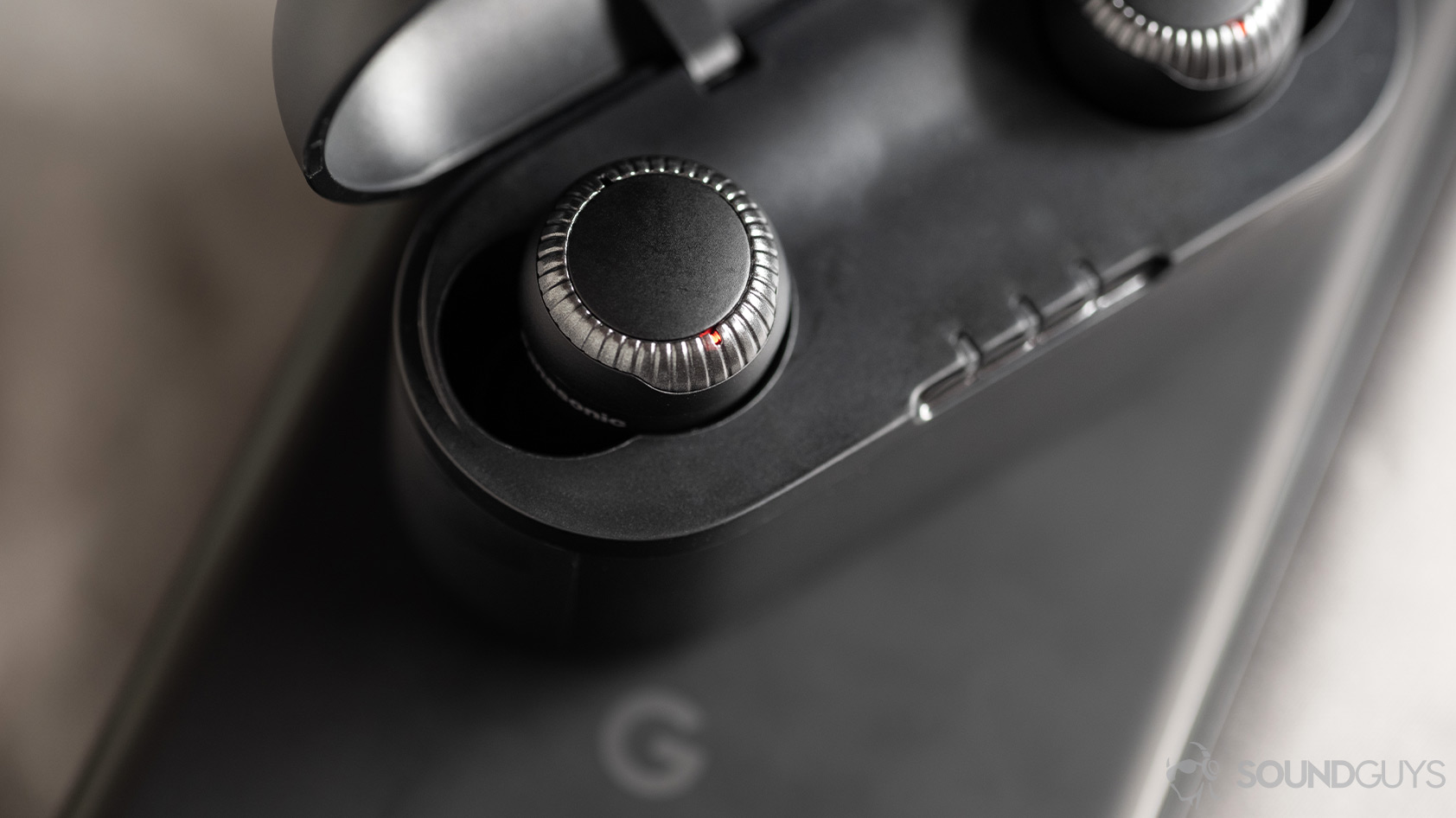
There are certainly cheaper true wireless alternatives with more features and better codec support, but most lack the audio engineering finesse heard here. USB-C and fast charging compatibility are both great features to have for on-the-go listeners. It’s great that you can use either earbud for mono listening, which adds plenty of functionality for hearing impaired and non-hearing impaired listeners alike. Whether you’re a die-hard Panasonic fan or just looking to upgrade your JLab earbuds, the RZ-S300W is a great buy.

What should you get instead of the Panasonic RZ-S300W?
A $120 USD budget will get you pretty far in the world of true wireless earbuds. If you own a Samsung Galaxy smartphone, get the Samsung Galaxy Buds Plus instead. These water-resistant earbuds support the Samsung Scalable Codec for high-quality, optimized streaming. You also get the added benefit of Wireless PowerShare, which lets you charge the Galaxy Buds case atop any compatible Samsung Galaxy device. The earbuds last well over 11 hours on a single charge, and support fast charging.
Another great option is the 1MORE ColorBuds. These earphones are even more compact than the RZ-S300W and use Bluetooth 5.0 firmware with aptX and AAC support. The earbuds feature an IPX5 rating, and support mono listening with either bud. They also feature sensors that automatically detect when you remove or insert an ear piece for auto play/pause functionality.